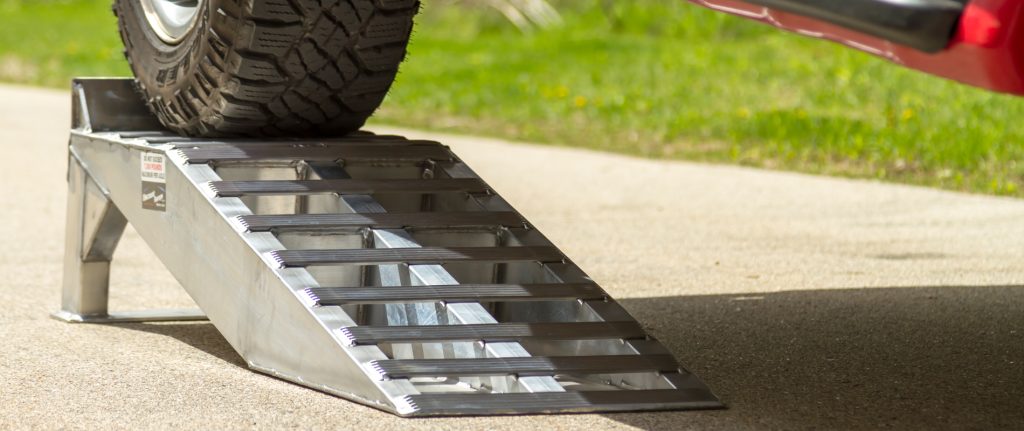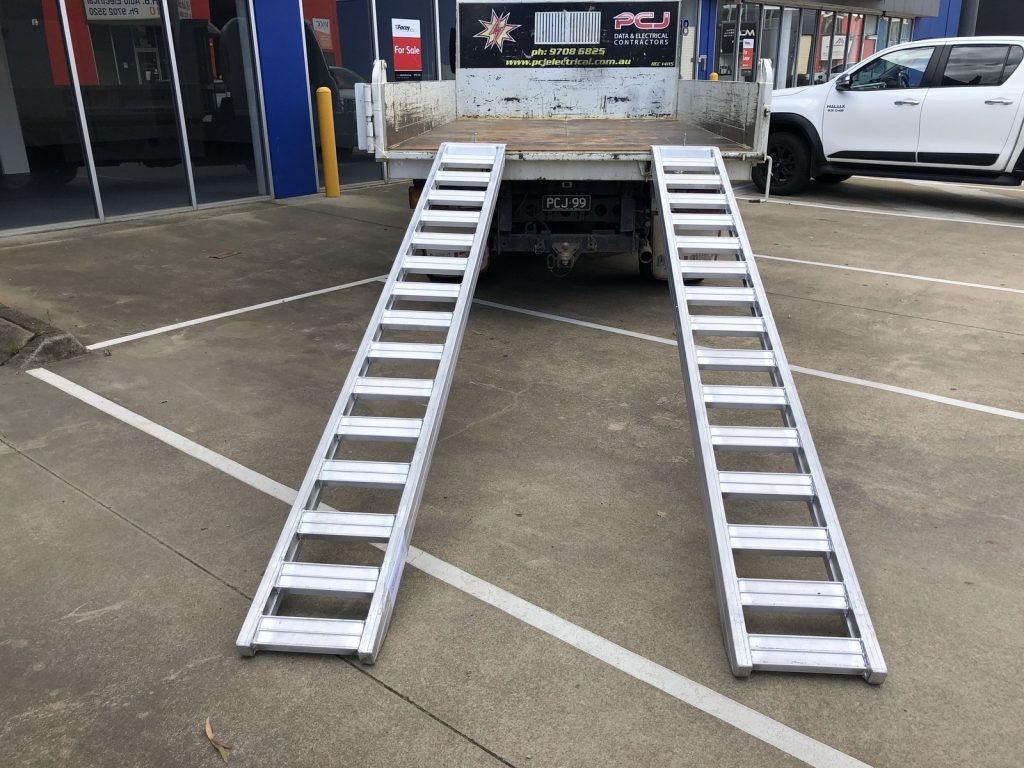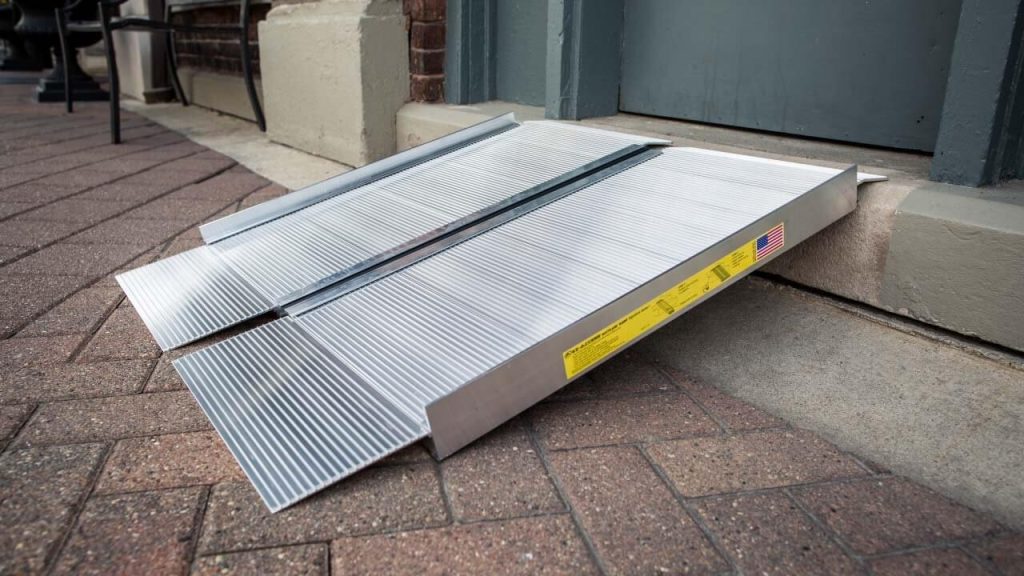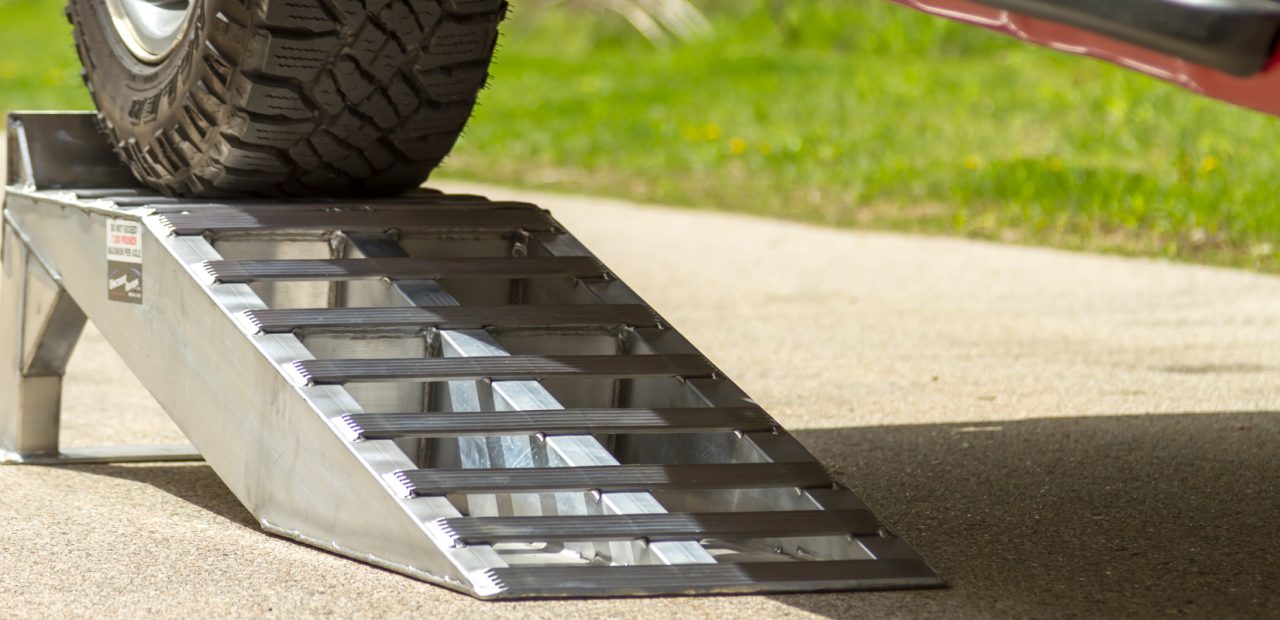Heavy-Duty Ramps: Your Guide to Safe Use
Anyone who regularly transports heavy machinery or wheeled equipment knows how important it is to have a sturdy pair of ramps to load with. Ramps, however, are more than just sturdy pathways for loading or unloading trucks or trailers.

In spite of their simplicity, they’re essential pieces of safety equipment that can make all the difference between getting your equipment to its destination in one piece, leaving it laying in pieces on the dock, or someone getting seriously injured. That’s not a situation you want to be in, so let’s take a look at what you can expect from a pair of safe loading ramps, as well as a few of the points you need to consider when you’re choosing them.
Contents
Staying Safe With Heavy-Duty Ramps
Make no mistake – the last thing you want to do when you’re loading an ATV, a lawnmower, or an excavator, is to damage the equipment or the vehicle you’re loading it onto. You want to get it done as safely as possible; and first and foremost, that means investing in a pair of adequately load-rated truck and trailer ramps that are suitable for the weight and equipment that you’re transporting.
Weight is the most important component in ramp safety. That’s why durable loading ramps regularly come with weight ratings between 1.6 – 6.5 tonnes, making them suitable for most loads that wouldn’t otherwise require special loading or transport equipment.
Ramp capacities are rated in pairs, and if you’ve verified that the axle weight of the equipment you’re loading doesn’t exceed the ramp’s allowable capacity, you can feel confident that you’ve avoided the most unforgiving aspect of safe loading. A ramp’s capacity is only backed by the superiority of its construction, though; and if you’re in the market for a ramp, you want to be able to identify a sturdy ramp construction when you see it.
Aluminium Ramps for Added Protection
Well-constructed ramps begin with structural-grade aluminium stock. High-quality, tempered aluminium T-beam side rails supported by tig-welded rungs provide the uncompromised strength and stability that heavy-duty ramps need, along with a host of other advantages that include:
· Lightweight. With the heaviest duty ramps weighing no more than 58kg per side, 6xxx aluminium ramps are light enough to be set up and taken down by a single person.

· Portability. Aluminium’s light weight makes for an incredibly portable loading ramp that can be slid conveniently onto a truck or trailer and used to unload the equipment just as quickly and safely as it was loaded.
· Durability. Unlike even stainless steel, aluminium loading ramps won’t rust, contain excellent anti-corrosion properties, and offer a strength-to-weight advantage that steel can’t begin to compete against.
In short, they have all the inherent construction qualities they need to be safe, as well as simple. And with material properties that don’t lack anything, the strength that’s designed into their rungs and rung profiles ensure safety is always at the forefront.
Ramp Rungs Designed for Safety
The rungs and rung profiles found on these units are just as important as the material they’re made from. Evenly spaced, open-style rungs with either raised- or low-profile side rails are ideal for preventing slippage at steep loading angles or clearance problems with short wheelbase machinery. The result is an optimum design for:
· Ensuring maximum equipment stability during loading;
· Allowing maximum traction under all types of weather or ground conditions; and,
· Actively stripping debris from the equipment’s tyres or tracks when being loaded.
The rung profiles, however, are key to determining which types of trailer ramps can be best used for loading machinery or equipment with rubber tyres, rubber tracks, or steel tracks. There are 3 types of rung profiles commonly found on these devices:
· Flat profile rungs. These rungs feature flat, anti-slip ribs and are mostly found on ramps for equipment up to 2.4 tonnes with pneumatic or full rubber tyres, or rubber tracks.
· Square profile rungs. These rungs are square, also feature anti-slip ribs, and are usually found on ramps for equipment up to 3.5 tonnes with pneumatic or full rubber tyres, or rubber tracks.
· Serrated profile rungs. These profiles feature raised grips for added traction, can be combined with flat and square profiles, and are ideal for maximum grip with all types of rubber tyres, as well as rubber or steel-tracked equipment beyond 3.5 tonnes.
With rungs that are designed to give you the safest and surest grip possible under any conditions, how you’re connecting your ramps to your truck or trailer are your next safety concern. Fortunately, high-quality equipment ramps have that covered for you too.
Keeping Your Ramp Securely Attached
To eliminate any likelihood of unexpected slippage when you’re loading your equipment, the ramps have to be secured to the vehicle you’re loading. It’s an essential safety precaution, and you can expect premium quality ramps to be fitted with 2 or more of the securing methods needed to accomplish that. The 3 most common safety connections methods are:
· Pins. A solid pin inserted through corresponding holes in the lip of the ramp and the threshold plate of your truck or trailer provides the perfect failsafe to prevent ramps from sliding away while you’re loading the equipment.
· Safety tongues. Safety tongues are aluminium plates that are attached to the underside of the ramp which, when slid between the deck of your truck or trailer and its threshold plate, prevents a ramp from moving.
· Straps or chains. Adjustable straps or chains that connect the underside of the ramp to the underside of your truck or trailer provide the redundant safety that’s necessary even if you’re already using pins or tongue connections.
Connections are the final fitment that’s needed to ensure that you’ve chosen the right heavy-duty trailer ramps to keep yourself and your load safe. All that’s left are a few points that you should follow to be sure that you’re using your ramps correctly.
Tips for Using Your Ramps Properly
Even though buying the best quality loading ramps is going to give you a tremendous advantage in safety, you still can’t afford to neglect the basics of how to safely load heavy machinery.
· Verify your equipment weights. Although you would have done it when you first purchased your ramps, if you’ve added attachments to your machinery or purchased new equipment, it’s worth taking those few extra minutes to confirm that your ramps will hold the weight.

· Load only from level surfaces. Loading your truck or trailer from a level surface not only reduces stress on the ramps, but it significantly reduces the risk of your equipment tipping off.
· Keep ramp angles to a minimum. While most heavy-duty loading ramp manufacturers suggest that loading angles never exceed 16°, you always want to keep the angle as low as possible to prevent a loss of traction.
The Final Word
At the end of the day, regardless of whether you’re loading an expensive piece of construction equipment or an even more expensive custom car onto a truck or trailer, safety comes first. And again, it’s not about the safety of any of the equipment: it’s about personal safety.
With adequately load-rated truck and trailer ramps, you can keep safety first and eliminate all of these concerns. You’ll be able to load your machinery and equipment with peace of mind, and that’s an investment that’s worth making.

















